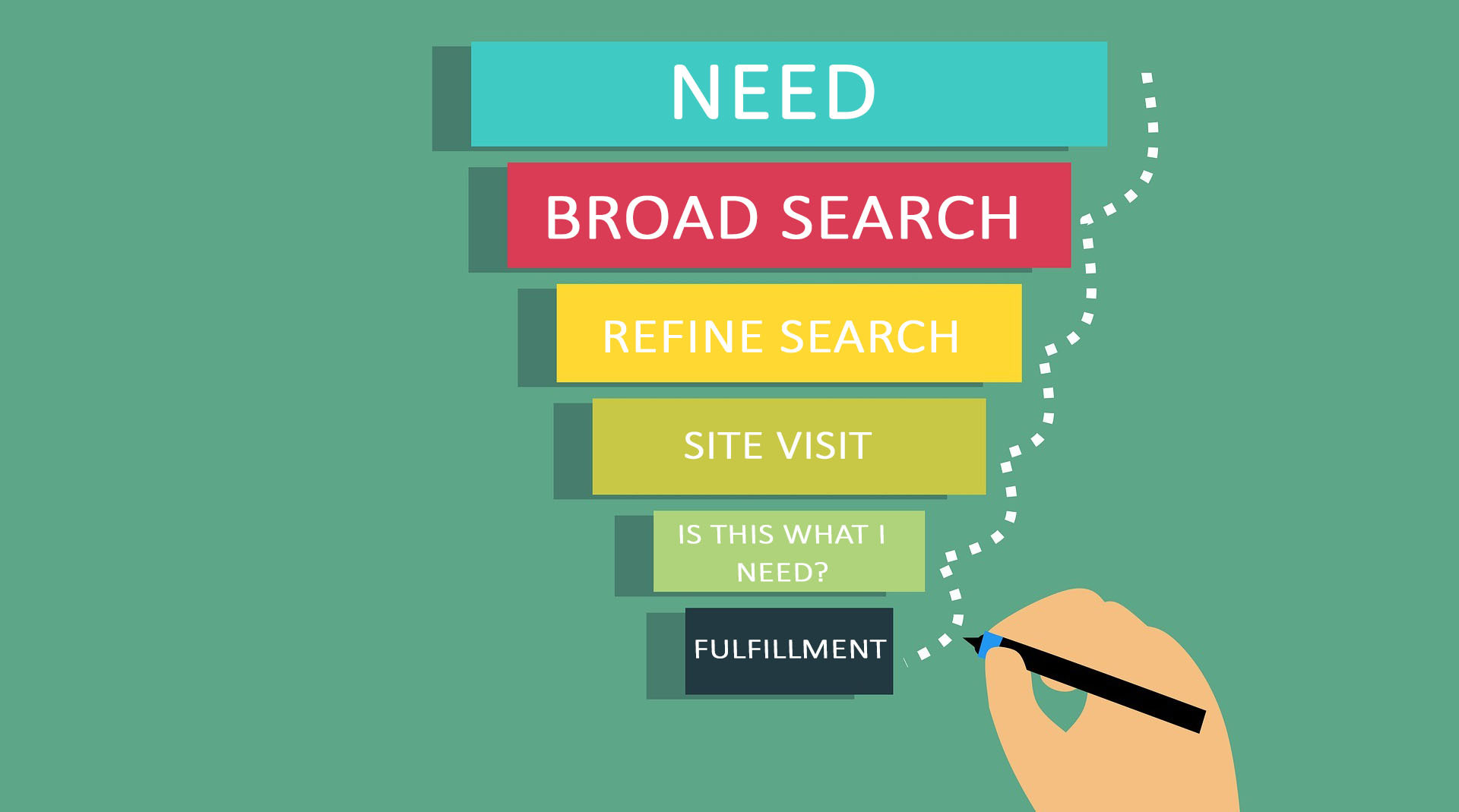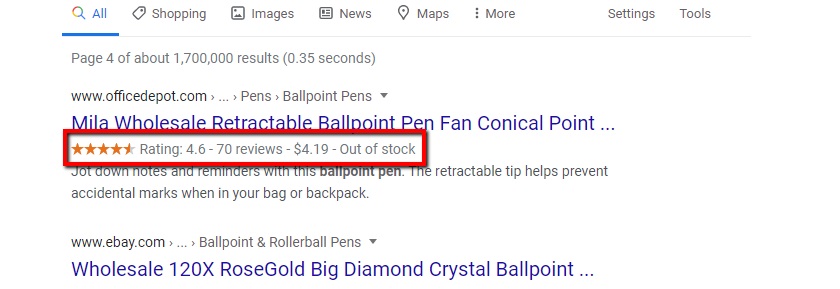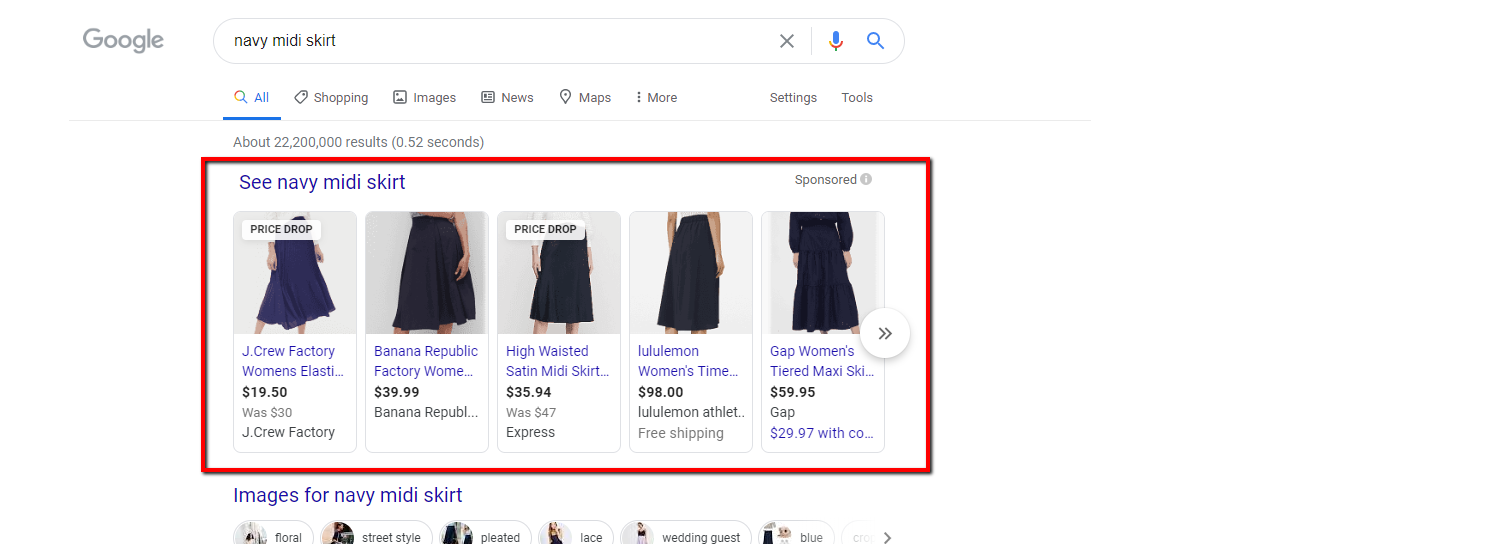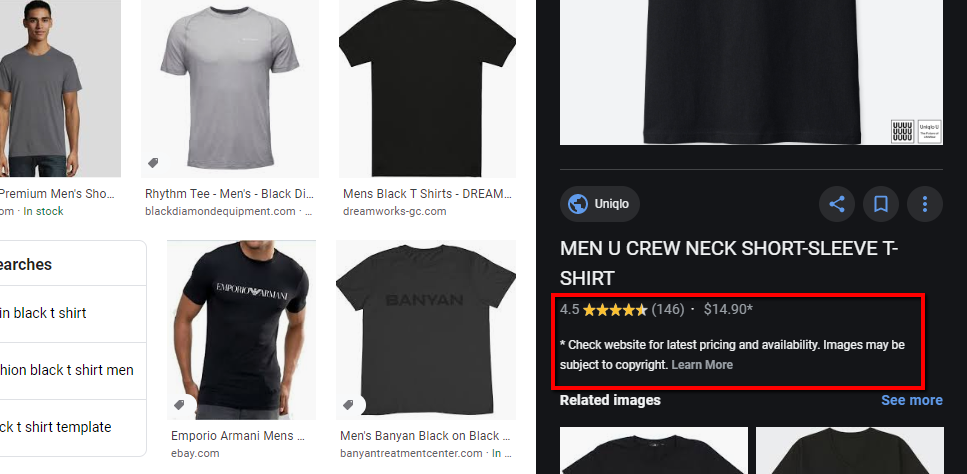20+ of the Best Ways to Drive Traffic to Your Website
Every business in the world wants customers and every business in the world wants to be able to drive traffic through their front doors. And, in 2020 businesses know that their website is a key part of business. So what are the best ways to drive traffic to your website?
There are a lot of ways, and most likely the best option for your business is likely to be some combination of strategies. A lot of different methods offer the “easiest” ways to drive traffic, or the “fastest” ways to drive traffic, or “free” ways to drive traffic, but the truth is they all require some time, and effort, and (in many cases) money to get working.
But digital marketing is fundamental to driving traffic to a website. Any marketer or business that is trying to grow traffic and build their brand visibility on the internet is practicing “digital marketing.” But there are a lot of different ways to do it.
We’ve set out to explain the most common, most successful, and effective ways to get traffic to your website.
Or follow these links to each strategy:
- Push versus pull in digital marketing
- Short-term and long-term strategies
- On-page SEO
- Search engine PPC
- Social media advertising
- Social media organic traffic
- Blogging and content marketing
- Intent marketing and keyword research
- Schema markup
- Mobile friendliness for search optimization
- Sitemap submission and indexing
- Email marketing
- Creating and optimizing landing pages
- Backlinks for off-page SEO and referral traffic
- Paid ads remarketing
- Guest blogging
- Open-graph page settings
- Search engine shopping results
- Image search optimization
- User-experience search marketing
- Page title optimization
- Hire a company
Push versus pull in digital marketing
First off, it’s pretty common to break down digital marketing into two main categories: outbound and inbound marketing, which are also sometimes called “push” and “pull” marketing.
These refer broadly to methods where you have to “push” your business out there, or where you “pull” in audiences naturally based on their interests. The key difference between push and pull marketing strategies is broadly paid advertising methods vs. marketing designed to grow traffic naturally.
In push marketing the goal is to bring your brand or products directly to your customers. This strategy is more proactive and aggressive. In pull marketing the goal is to build a brand that naturally appeals to an audience that’s interested in your products/services/content – they come to you.
Another way to think of the difference is:
- Push marketing usually involves paid advertising or promotions.
- Pull marketing mainly consists of content marketing, natural customer interaction, reputation etc.
Short-term and long-term strategies
Another way to break down strategies for web marketing includes short-term vs. long-term digital marketing strategies.
Before deciding what the best ways of driving traffic to your site are, you need to establish what your goals are. Either fast results and quicker revenue, or long-term growth that’s reliable and safe. Most likely you’re interested in both, which means that using a multi-channel approach is best.
Short term strategies include proven advertising methods like paid-search advertising, shopping ads, and social-media PPC. In fact pay-per-click advertising is by far one of the most popular short term marketing methods since it offers immediate results, is easy to get started, and is almost guaranteed to bring in sales fast.
On the other side of the coin, SEO and social-media are great long-term strategies. SEO is a great way of getting long-term, consistent, and passive traffic for years to come – and it famously offers an amazing ROI. Social media marketing can take a long time in building an audience – but it can be great for building brand recognition, word-of-mouth brand growth, and customer loyalty.
We’ll explain more about what strategies suit these goals as we describe the best ways to drive traffic to your website below.
On-page SEO
Search engine optimization in general is almost universally considered one of the single most effective ways of bringing traffic to your website.
It’s possibly the most popular method there is, since it’s the one type of online marketing that gives the greatest ROI. The traffic numbers don’t lie either – SEO is critical to any online business since organic search traffic now accounts for an incredible 51% of all website traffic. Over 40% of online revenue is captured by SEO traffic. The truth is that search engines are one of the main ways that people use the internet and find products, brands, or websites. SEO is just too important to ignore.
On-page SEO best practices involve meta data optimization like title-tags, meta descriptions, content optimization, keyword density, and more. These updates happen “on page” and are some of the most important SEO algorithmic ranking factors – which is why they are so important.
Despite being one of the best ways of driving website traffic, a few marketers are wary of SEO since it requires a fair amount of work, and because it sometimes takes a long time to see results. But delayed results or not, SEO is absolutely important for business.
Search engine PPC

Most business owners have heard of PPC and are likely aware of how successful it is. Like we mentioned above, paid search advertising is one of the best ways to drive traffic to your website fast! Its biggest draw is that it works practically overnight.
This makes it ideal for businesses that want to drive results fast, bring in sales numbers quickly or take advantage of short-term windows (like holidays, seasonal events, sales, etc.).
PPC is also one of the best ROI providing strategies – and it can help feedback well into other marketing channels (like content marketing and SEO) making it great for multi-channel marketing. It’s also very data-rich, making it a great method for driving traffic to your website with high-value leads. In fact, PPC visitors are 1.5X more likely to convert than organic visitors. PPC is an incredibly easy way of putting your business in the top 3 spots on the top of page 1 for platforms like Google or Bing – which is why it’s so ideal for traffic growth.
Social media advertising
In broad terms social media is one of the most important sources for website traffic – in more ways than one. Social media platforms provide an important source for both natural, organic traffic as well as paid-advertising. Plus they can help extend the reach of content-marketing strategies, improve SEO via increased shares/backlinks, build brand recognition, and increase return users.
Social-media based pay-per-click advertising is one of the best ways of driving traffic to a site since it’s a fast working, push-based strategy that works similar to search PPC. With a budget, marketers can access very precise audiences and take advantage of data-based advertising filters to put their ads in front of their most important customers.
In fact, many platforms offer “site visit” as an explicit option for ad types/focus!
Paid social ads help businesses get in front of 3.5 billion people worldwide, and about 20% of marketers claim that social media has the highest ROI for their site. Plus it’s easier to convert social media traffic to website referrals – making social media one of the best ways to drive traffic to a site using off-site visibility.
Social media organic traffic
1 in 4 U.S. shoppers now claim to prefer being contacted by brands via social media, making platforms like Facebook, Instagram, LinkedIn, etc. great opportunities. More than half the world’s population uses social media now, and social media platforms like Facebook, Instagram, LinkedIn, or Twitter act as a home-away-from home where brands can extend their reach, put themselves in-front of millions of people, and refer people back to their website.
Social media marketing acts as a great form of inbound marketing where businesses can engage with people that are naturally interested in their brand’s service/content. Better social media content and content sharing can improve back-link growth for SEO and improve search engine traffic. It can also boost the effectiveness of social PPC ads.
Blogging and content marketing
Many experienced marketers see content/blogs as their own stand-alone styles of marketing. But they work in collaboration with many of the other strategies in this blog. In fact you can’t do marketing without content!
Why is content marketing so important? Content is a crucial SEO ranking factor, it’s an important source for off-page SEO via backlink growth, it’s the backbone of social media content, and it underlies basically every inbound strategy. Afterall, how do you expect to drive traffic to your website if there’s no content to drive traffic to?
70% of marketers are investing in content marketing, and nearly 1/4th plan to increase their content marketing investment in 2020. As many as 94% of marketers use social media for distributing their content, making these two strategies some of the best ways to drive traffic to your website.
Content can mean a lot of things, but blogs are the most common form (and one of the best, since each blog can be tailored for specific topics and keywords). But content marketing also means building out cornerstone content on top-level pages, producing landing pages for inbound traffic, multi-media content, guides, FAQ pages, contact pages and more.
Intent marketing and keyword research
As a part of SEO, PPC and even content creation, keywords are a big part of approaching the world of digital marketing. In fact, being able to isolate important audiences and target important shoppers begins with keyword research.

Businesses can perform keyword research to find their most important search audiences as well as to build the baseline for their SEO and their search engine advertising. These keywords are also an important strategy for content marketing in that keyword density can help improve organic traffic.
Many marketers use Google Keyword Planner, or Google Search Console to find high-value search audience and to drive traffic to their site with:
- Head-keywords for highly competitive, high traffic queries that can bring in internet users at the top of their search funnel.
- Longtail keywords that offer higher click-through-rate (CTR) and represent shoppers that are more likely to convert.
- Intent driven keywords that indicate shoppers who know exactly what they want and which can help marketers create well curated high-value content for potential shoppers. This includes keywords like navigational queries, informational queries, and transactional queries.
How do you do Google search intent marketing? Understanding what the intent (or the intended goal) of internet searchers is, is crucial to being able to create high value content that gives them precisely what they need. This can boost SEO effectiveness, increase clicks, and is one of the single best ways of driving traffic to your website.
Schema markup
Schema markup (also called “structured data) is a special code type that you put on your website to help search engines return more informative results for users. It can tell search engine indexing bots important information about what kind of content is on the page.

Schema markup is a great way to get traffic to a site from search engine results pages (SERPs) and to improve CTR. Search engines can include schema markup in search results so that marketers can offer info like:
- Creative work information (ISBNs, length, etc.).
- Event (time, date, location).
- Product details and eCommerce information like price, inventory status, manufacturer, etc.
- Personal details, author info.
Not only does schema have the opportunity to improve CTR, but it can increase conversions, and reduce bounce rate.
Mobile friendliness for search optimization
Mobile friendliness is a pretty complex concept that encapsulates a lot of elements. But it’s a part of Google’s algorithm. Google announced its “mobile first” search index in 2018 and by 2020 every eligible website was moved over to the mobile index.
This means that mobile friendliness is crucial to driving mobile traffic to your website. These days mobile traffic accounts for roughly 51% of web traffic, and is likely to increase fast. Businesses should optimize their mobile phone SEO by focusing on ranking factors like:
- Reflexive page formatting (with a viewport tag).
- Mobile friendly text size that is easy to read.
- Buttons and navigation that are easy to click.
- Faster mobile page load time and server responsiveness.
- Intuitive design that makes the main content easy to see.
Sitemap submission and indexing

Businesses can use sitemaps and indexing optimization techniques to improve their site visibility and their search performance. Sitemaps are a key way of getting a business listed in Google Search, and boosting traffic.
Every website should make sure that their sitemaps are visible and readable to search engines – they should also submit their sitemap in Google’s Search Console to encourage faster indexing and to get their important URLs indexed more quickly.
Other indexing controls include canonicalization, robots.txt files, and meta robots HTML commands that can make indexing more efficient and help search engines understand which pages are most important. This is an important SEO strategy to drive traffic to your site.
Email marketing
Email marketing is another popular method for driving site traffic and is very common. 1 in 3 marketers claim that email marketing offers them the best results, second only to SEO.
This classic strategy is based on sending emails to would-be customers and building brand recognition through email content. 80% of small businesses rely on this strategy for customer acquisition, and 49% of consumers even claim that they would like to receive promotional emails from their favorite brands – making this a potential top strategy for driving traffic to your website.
The main drawbacks for email marketing are that it requires a pre-existing audience relationship or an audience supplied email database – which can take time to build.
Creating and optimizing landing pages
Landing pages tie-in to marketing strategies like search engine optimization and paid-advertising – they’re actually critical to marketing.
Often times landing pages are stand-alone pages specifically created as a place where visitors “land” from outside the domain. Essentially the first page they see.
Landing pages then, are a key piece of the puzzle for driving traffic to your site. But, the truth is that depending on how you approach your marketing and advertising strategies, any page can be a landing page (like blogs, category pages, home-pages, even product pages). On the other hand though, many businesses like to build specific pages designed to target important keywords they find during their keyword research, and with curated content designed to focus on shopper intent.
Tracking and optimizing your top landing pages can improve the existing traffic for your site. At the very least it’s important for businesses to know and identify their landing pages.
Backlinks for off-page SEO and referral traffic

Backlink growth is one of the hardest things to achieve in digital marketing – but it’s one of the most important. Any time another website (a separate domain) includes an a href link to your domain it has the potential to drive traffic to your website – search engines use it as a ranking signal, and they can potentially boost valuable referral traffic as well.
A site’s link neighborhood and backlink profile is used by Google’s PageRank system as a hugely important part of SEO. Businesses should never attempt to artificially grow their backlinks, but some legitimate strategies can help:
- Content marketing and blogging can help grow backlinks over time with high-quality shareable content.
- Social media marketing can help spread your content and brand, making it more likely that people will link to your site.
- Paid advertising to creative content can help drive traffic and visibility, making it more likely people will link to your domain.
- Influencer marketing can also help boost shares and increase content visibility.
Paid ads remarketing
Remarketing (also called retargeting) is one of the best ways of driving traffic to your site with high-value leads that have already visited your business, have already expressed interest, and are far more likely to lead to a sale.
Remarketing is a feature of PPC that lets businesses customize their ad campaigns to target people who have already previously visited – using a remarketing list for ads. Remarketing for Google ads (for example) is an extension of Google’s primary PPC advertising, which means it’s an additional option for advertisers that are already using normal PPC. The remarketing option also exists for Bing ads and Facebook ads.
The average CTR for remarketing ads is 10X greater than regular display ads, making it a great way of getting traffic to a site. Remarketing also claims a better conversion rate than generic ads.
Guest blogging
Many marketers know that guest blogging is a classic method for growing traffic. It’s a content marketing and SEO technique where someone writes a blog post for another website (related to your business in subject matter) in return for a brand shoutout or a backlink.
Guest blogging is a great way for improving traffic to your site via referrals, and it can boost your brand recognition.
For SEO purposes though guest blogging is a grey area, Google has publicly warned that when done improperly it can be seen as a spammy black-hat strategy. In fact, in SEO, not all links are equal, so it seems that these links are devalued by its search algorithm.
Open-graph page settings
Open-graph protocols involve implementing meta data in a page’s HTML that give it special customization and characteristics for social media sharing. Usually this means that pages shared in social media include custom titles, and custom images.
Like in the example below, open graph images let businesses drive traffic to their site by spicing up their links with attractive thumbnail-like images and titles (og:image and og:title). Usually a site’s content management system (CMS) offers options for open-graph settings, or there are options for 3rd party plugins.

Open-graph settings make your social-media post/links more visible and can boost CTR – making them one of the best ways for boosting traffic in social-media platforms.
Search engine shopping results
Bing and Google offer new channels for eCommerce brands that want their products to appear directly in search results.

Because “shopping” results port your products into search results, they might not seem like the best way of driving traffic to your website – but they can help. Google Shopping gives marketers options for both paid results (as part of a PPC campaign through Google’s Merchant Center) and now, organic results. This means that eCommerce retailers can have their products appear in an entirely new vertical of search whereas before they might not.
Although the idea with search engine shopping results is that purchases can happen in search results (not such a bad thing) the increased visibility has the potential to drive traffic to your site as a bonus. In fact, Google Shopping requires a link to the verified product landing page.
Image search optimization
This is another growth strategy for eCommerce success, as well as a good way of driving traffic to your website with a little-known strategy that’s rarely used. About 30% of Americans search for visual content prior to making a purchase, and more than 25% of online searches are for images.
This means that image SEO has a lot of potential.
Businesses can use HTML image “alternate text” tags to indicate to Bing or Google what the subject matter of an image is, improving its SEO ranking. File names and the surrounding content also provide context – helping your images rank better for certain keywords.
Finally, images with schema-markup for product images can drive traffic to your site by giving shoppers information about your products. Google now includes product details in image SERPs including elements like pricing, product rating, description and more.

User-experience search marketing
One of the best ways of driving traffic to your website is keeping the visitors you already get. Businesses can focus on improving their site’s overall speed and their page-load metrics in order to decrease visitor bounces and to even increase their organic search engine traffic.
Why should this matter to businesses? Google data claims that longer page load time is bad for experience and will drive away traffic, in fact:
- As page load time increases from 1 second to 3 seconds, bounce rate increases 32%.
- If page load time increases from 1 second to 6 seconds, bounce rate increases by 106%.
Now Google is including new “core web vitals” metrics into its ranking algorithm, which will measure page speed, response time, and bad UX elements for SEO ranking. This means that making your site faster, easier to use, and more reliable is a good way to get traffic to your site from Google.
Page title optimization
It’s worth mentioning page titles as a standalone strategy here, because they are just so important! Page titles feed into your meta title-tags, your social media titles, open-graph titles, and more. They are one of the single most important elements in digital marketing, and are one of the best ways of driving traffic to your site.
They do this because they end up almost everywhere. Page titles can show up in search engine results, social media posts, anchor-text, content aggregators, and even in browser tabs. This means they are critical to boosting CTR to your site and appealing to the psychology of shoppers and web users. Many search/social algorithms also use page-title keywords to understand the topic of a page – so they know which users to show it too.
Optimizing titles using best-practices is a good way to get more traffic to your site. There’s a lot that goes into writing a good page title (and it will vary from channel to channel), but marketers should pay attention to:
- Length; titles should not be too long since they can be truncated by search engines and social media sites.
- Including keywords for better algorithmic results.
- Honesty; avoid misleading or poor click-bait descriptions.
- Psychology of target audiences and what descriptions are appealing.
- Branding as a way of building your business’s reputation.
Hire a company
There are companies that drive traffic to a site by optimizing design, content, and more to help improve SEO and paid ads.
But digital marketing agencies come with their own pros and cons. The main drawback is cost since professional companies charge for complete service. But strategic SEO services also come with tons of benefits for brands that think it might be worthwhile. They can: draw on experience from previous clients, do professional keyword research, monitor for traffic drops/penalties, fine-tune CTR, and they can fully dedicate their time to optimizing and adjusting meta-data, content, and internal site structure (with ATLs).
The same goes for PPC and social paid-media marketing services – they can provide experience, 24/7 dedication to ad creation/optimization. Plus they can monitor analytics data, adjust campaigns, and provide reports/KPI tracking. The whole point of these services is to drive traffic to your site – using only legitimate, legal strategies.
Learn more
Contact us to learn more about the best ways to drive traffic to your website with professional digital marketing strategies like SEM agency services, search PPC, social media advertising, SEO, and content optimization.
